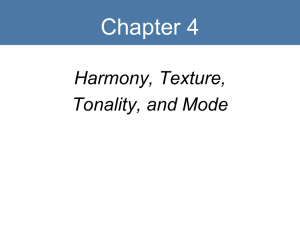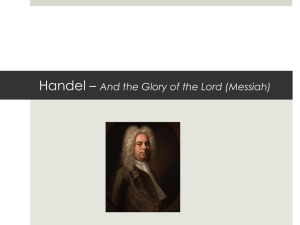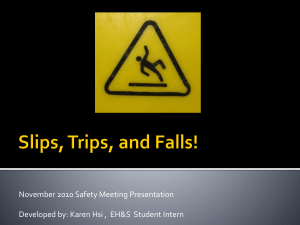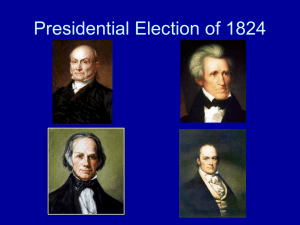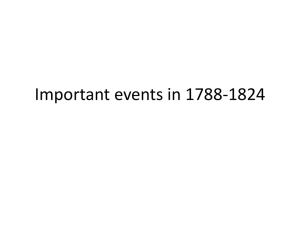6-texture-2014
advertisement
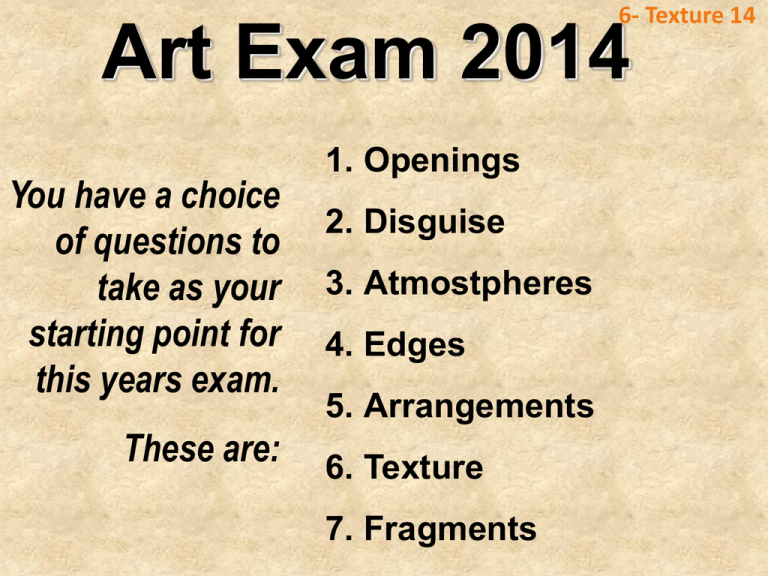
6- Texture 14 Art Exam 2014 You have a choice of questions to take as your starting point for this years exam. These are: 1. Openings 2. Disguise 3. Atmostpheres 4. Edges 5. Arrangements 6. Texture 7. Fragments 6- Texture 14 The appearance & tactile nature of surfaces sometimes inspires artists, designers & craftspeople. Frank Auerbach develops urban landscapes & portraits in dense layers of paint, creating textured surfaces. The work of ceramicist Anne Goldman is inspired by the surfaces of rocks in the desert canyons of California. Amarjeet Nandhra combines print, mixed media & stitch as she explores the textures seen in deteriorating surfaces. Clay Ketter has used painting, mixed media & photography to explore textured surfaces. Research appropriate sources & produce your own work in response to TEXTURE Frank Auerbach 6- Texture 14 Frank Auerbach develops urban landscapes & portraits in dense layers of paint, creating textured surfaces. Frank Auerbach 6- Texture 14 Frank Auerbach develops urban landscapes & portraits in dense layers of paint, creating textured surfaces. Frank Auerbach Frank Auerbach develops urban landscapes & portraits in dense layers of paint, creating textured surfaces. 6- Texture 14 Frank Auerbach 6- Texture 14 Frank Auerbach develops urban landscapes & portraits in dense layers of paint, creating textured surfaces. 6- Texture 14 Here an art student works in Frank Auerbach’s style applying dense layers of paint, creating textured surfaces over her own face Frank Auerbach Frank Auerbach 6- Texture 14 Anne Goldman The work of ceramicist Anne Goldman is inspired by the surfaces of rocks in the desert canyons of California. 6- Texture 14 Anne Goldman 6- Texture 14 The work of ceramicist Anne Goldman is inspired by the surfaces of rocks in the desert canyons of California. Amerjeet Nandhra 6- Texture 14 Amarjeet Nandhra combines print, mixed media & stitch as she explores the textures seen in deteriorating surfaces. Amerjeet Nandhra 6- Texture 14 Amarjeet Nandhra combines print, mixed media & stitch as she explores the textures seen in deteriorating surfaces. 6- Texture 14 Clay Ketter has used painting, mixed media & photography to explore textured surfaces. Clay Ketter Clay Ketter has used painting, mixed media & photography to explore textured surfaces. 6- Texture 14 Clay Ketter 6- Texture 14 Clay Ketter has used painting, mixed media & photography to explore textured surfaces. Clay Ketter was first acknowledged for his Wall Paintings (1992-99), plasterboards with spackle over screws and joints. They were both strikingly beautiful abstract paintings and a sort of fabricated readymades, less finished than the wall they were hung on. Clay Ketter 6- Texture 14 Trace Paintings (1995-) is another series of paintings that resemble wall surfaces being redecorated. Traces of wallpaper, shelves and electric wiring evoke a sense of uncertainty in the onlooker as to whether this is a real wall or a painting of a wall. Combining consistency and innovation, Clay Ketter has continued to produce works in the borderland between architecture, sculpture and painting. The variation between media including painting, photography and sculpture are complex, but his works are always visually arresting, with their terse composition and sensitive shift of colour. Clay Ketter 6- Texture 14 Clay Ketter’s relationship to scale and impact incorporates him in an American painterly tradition that started in abstract expressionism and developed into minimalism. Clay Ketter 6- Texture 14 Clay Ketter has used painting, mixed media & photography to explore textured surfaces. Clay Ketter 6- Texture 14 The artist Clay Ketter is one of Sweden’s greatest US imports. He was born in 1961 in Connecticut and studied in New York, but has been living on the plains of Scania in southern Sweden for more than 20 years now. It was in Sweden he had his breakthrough in the mid-90s, with Wall Paintings, a sort of ready-made created with gypsum wallboards, with tape and spackle. Before then, he had worked as a carpenter and craftsman. His international career took off and he is currently featured with a solo exhibition at the Sonnabend Gallery in New York. Surface textures can be seen and felt. 6. Texture The Dutch Still life painters of the 17th Century attempted to truthfully record the exact detail of a surfaces texture. Artists often create surfaces 6. that exploit textures in paint or other media Black Queen by Hew Locke Lucien Freud’s portrait Texture These two 20th Century artists create very textured surfaces in their portraits of the Queen. Freud consistently explores flesh with textured brushstrokes. How has Hew created the Queens portrait here? 6. Texture The surface of this famous face has been made using a collage of thousands of photographs mosaiced together. These surfaces appeal in both a visual & tactile way 6. Texture Gaudi mosaics together thousands of fragments of tiny broken tiles. Kirsten Glass not only paints the appearance of different textures… she also uses the texture of paint dripping, splodging & cascading to communicate what she intends to the viewer. 6. Texture 6. Texture 6. Texture Edgar Degas creates the most beautiful surfaces with strokes of pastels. Bare flesh shimmers under spotlights, but even the background is lovingly considered. Every media creates textures which artists use to their advantage to communicate to the viewer. 6. Texture 6. Texture 6. Texture 6. Texture Raoul Haussmann used photographs cut from magazines & newspapers to create realistic textures in this unlikely surrealist collage. The head is made from found 3-D objects. A technique used by other Dada artists… This abstract composition is called an assemblage – this is the term given to artworks composed out of found objects. It was created by Kurt Schwitters who for a while worked in 1. Surfaces Ambleside in the 1920’s. 6. Texture Joseph Cornall also created assemblages out of boxes filled with found objects and images instead of painting. He worked in the 1920’s, long before Pop Artists started to create similar sculptures in the 1960’s. Inspired by the assemblages of Dada artists, Kurt Schwitters and Joseph Cornall… 6. Texture …Pop Artist Robert Rauchenberg created a stir when he exhibited this sculpture made from junk. 6. Texture Bruce Grey creates his assemblages out of junk metal. Bruce Grey Very poignant in todays world where there is an urgent need to recycle. Potter & sculptors sometimes create textured surfaces in their work. 6. Texture an artist… …inspired by Art Nouveau studies the pattern in the kiwi… … & creates unique vessels… 6. Texture A GCSE student… …inspired by the artist… …creates a fantastic vessel… …from studying a pomegranate. 6. Texture Louise Hibbert 6. Texture Sarah Parker- Eaton 6. Texture Giacometti 6. Texture Archimboldo A variety of materials can be combined in embroidery, mosaics & weaving making contrasting surfaces. 6. Texture 1. Surfaces a decorative Art & Design movement involved painters like Klimt in Vienna & architects like Anton Gaudi in Barcelona 1890’s to 1920’s Art Nouveau Art Nouveau Gustav Klimt 1. Surfaces Here is some of Gaudi’s work he used broken bits of tile & china to decorate the surfaces of his buildings & parks. Gates and banisters twist like organic forms in the Art Nouveau style. 6. Texture Alphonse Mucha was a famous Art Nouveau Designer The Kiss 1909 6. Texture You could study the surface patterns of Art Nouveau Artists & Designers like Klimt, Mucha and Gaudi before taking them into your work… The surface pattern you develop should be strongly influenced by the artwork you collect. You may consider making and applying surface pattern to a whole range of designed objects of which you would execute one: e.g. you could apply pattern to… vessels made out of mudroc (like in your yr 10 project)… to silk… to stained glass… to a product bag… to a relief mirror… to teapots… there is no limit… 6. Texture 6. Texture …to chunky jewellery… …even to clothing worn as jewellery…

